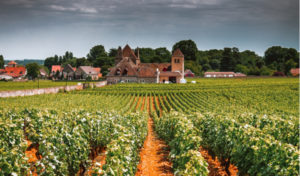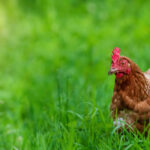
Image used under license from Shutterstock.com
Wealthy French investors are grabbing up land in Burgundy at a rapid pace. Locals are worried about the influx of outsider investors, but so far the region doesn’t appear to be undergoing the same urbanization effects Bordeaux has seen. Two of France’s wealthiest citizens, François Pinault and Bernard Arnault have purchased adjacent vineyards in Burgundy, sparking the fears of locals that they will be inundated with new buyers. Christy Canterbury writes at Wine-Searcher:
Pinault certainly paid mightily for the pleasure of owning this historic, 7.53 hectares walled-in vineyard, whatever the figure may be. However, the Roederer Group, which lost its bid due to leaking its acquisition attempt, is locally known to have bid €210 million ($244m). Others in the running were FICOFI (an exclusive wine club for collectors), Dassault (which owns the eponymous château in Saint-Émilion) and Alibaba’s Jack Ma, whose interest allegedly cranked up the price tag. Most local guesses range from €225-250 million, but producer Emmanuel Rouget wouldn’t be surprised if it were as high as €300 million.
Contrast this to Arnault’s 2011 purchase of the 11 hectares (8.66 hectares of which are in the grand cru clos) Domaine des Lambrays for €101 million. It’s not entirely apples to apples, as Arnault owns 2.34 hectares of premier cru vineyard in Morey-Saint-Denis and Puligny-Montrachet. However, the per hectare average is €9.18 million. It didn’t sound like it six years ago, but now that looks like a bargain compared to Pinault’s purchase at €29.88 million per hectare (based on €225 million). In financier terms, that is a 3.25 multiple. This is an alarming contrast to the January 2017 estimate by the French rural land management agency SAFER that grand crus run €4 million per hectare on average, according to Decanter Magazine.
So, while Burgundians have been deeply curious since this spring to know who was in the bidding for Clos de Tart, beneath the chatter is a gutting worry. Will Burgundy go the way of Bordeaux with outside investors buying the region’s land and heritage? It seems inevitable. Guillaume Tardy said: “We’re hitting a wall. This is nibbling at our vines.” Géraldine Godot of Domaine de l’Arlot said: “Our heritage will not remain in Burgundy.”
It is not just the price of land that is the issue; it is also the succession taxes. The two go hand-in-hand. While the calculation of France’s onerous succession taxes supposedly do not include glorified one-off purchases like Clos de Tart or the Arsenal and Screaming Eagle owner Stan Kroenke’s purchase of Bonneau du Martray (previously owned by the Le Bault de la Morinière family for two centuries and producing exclusively grand cru wines), they inevitably will. Tardy mentioned that Burgundy’s villages now have indices to help determine tax assessments. And, sometimes inheritance comes faster than expected. Sophie Confuron of J.J. Confuron remembers getting hit within two years by her grandmother’s then her father’s tax bill in the early 1980s. Talk about a perfect storm.
Ironically, Burgundian home prices remain incredibly low. A five-bedroom stone house in Meursault is listed in a local real estate office window for just €265,000. While the urbanization of Bordeaux’s vineyards is a problem, it seems Burgundy is experiencing the opposite. Raze the houses. Plant more vines. Confuron joked that perhaps they should move the cemetery from the Vosne-Romanée Premier Cru vineyard of Suchots.
Read more here.
If you’re willing to fight for Main Street America, click here to sign up for my free weekly email.




